So my irregular Tuesday Boardgame feature appears on Wednesday … reason why, it’s complicated and tedious. Last time I ran a Tuesday Boardgame it was GMT’s COIN game on Afghanistan, A Distant Plain. This time it’s another GMT game, South Mountain from the double game Twin Peaks that I mentioned about a month ago.
I chose the simplest scenario from the South Mountain Battle Book, Fox’s Gap, in which a brigade of Cox’s Kanawha Division, Ohio troops with a good reputation, go up against Garland’s North Carolinans, who are all rated as Green but have the benefit of a good defensive position. It’s a two-turn game, and the side to hold hex 3922, the hex behind the Jeff Davis artillery unit at the top centre of the picture, at the end of two turns wins. It’s a simple scenario to get my head around the key rules of the Great Battles of the ACW series, which basically go back to 1970s and Terrible Swift Sword, except that the command and control rules, which run from Army Commander through Corps to Division and Brigade, don’t apply in this scenario.
First side to go is by dice roll and the Union wins so the order is prep fire against the Confederate centre while two battalions of the 30th Ohio advance on the right, supported by the artillery, three sections of the 1st Ohio.

The rest of the Union infantry uses Prep Fire, which gives a stationary shooter a +1 bonus. Two units fire on and hit the 5th NC, causing a step loss and a disruption. 5NC gets hit a second time and fails its morale test, losing another step and falling back two hexes.
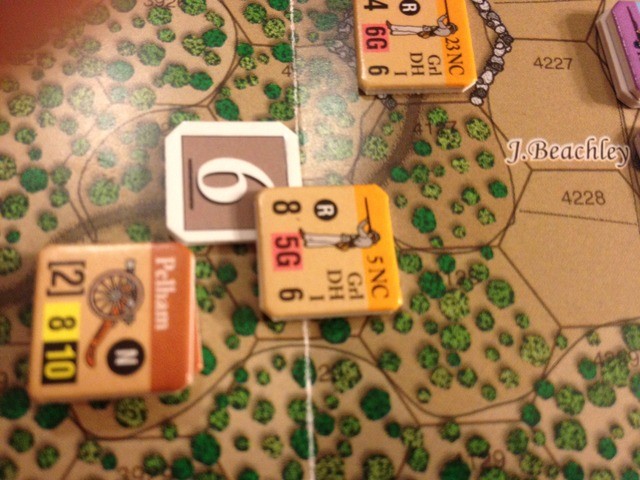
30th OH advances on the 13th NC and its supporting artillery. The Parrotts of the 1st OH don’t do any damage on the way in. The Jeff Davis artillery get to shoot on infantry moving within three hexes of them, but don’t do any damage. 30 OHb doesn’t have the movement allowance to charge, so shoots and causes no damage. 30 OHa has the movement to charge and does so. It takes fire from 13NC on the way in but no damage and it continues with the charge. I misread the rules and counted the Jeff Davis artillery (4 SPs) as part of the Shock Odds. In fact, artillery don’t count in Shock Combat. The Union didn’t roll well, and the result is that everyone is disordered.
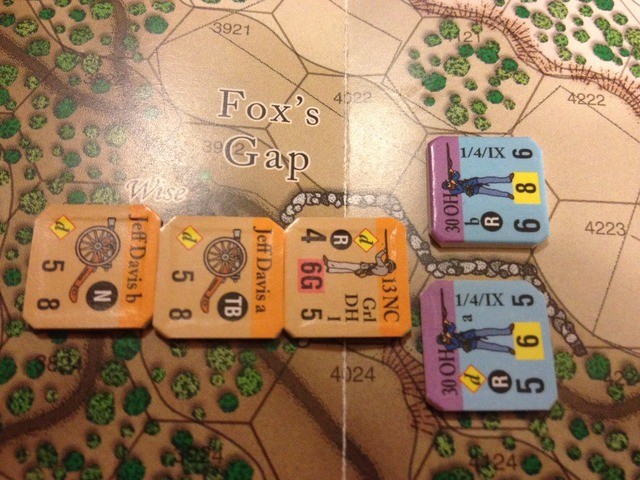
That ends the Union turn. The Confederates don’t have a lot of options, but Garland runs over to 13th NC to try to help them rally and defend against a second melee. His modifier (leaders get a -1 for each star on their counter) helps Section B of the Jeff David artillery and the 13th NC to rally, which will help them trying to stand another assault.
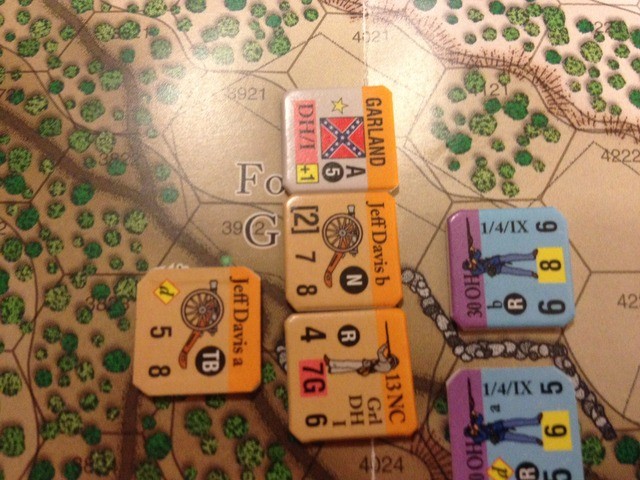
Garland’s only reserve is the 20thNC, which uses all its MA to charge the 30 OHa in the flank. Ouch. That’s a whole lot of hurt on the Buckeyes..
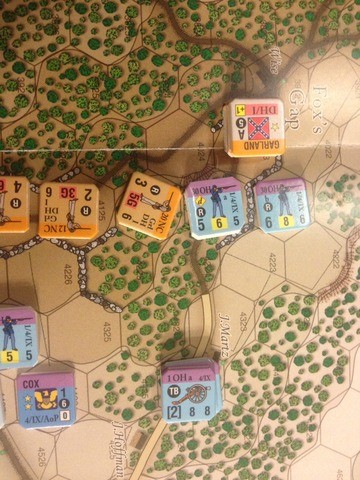
The 30OHa are thrown back with two step losses.
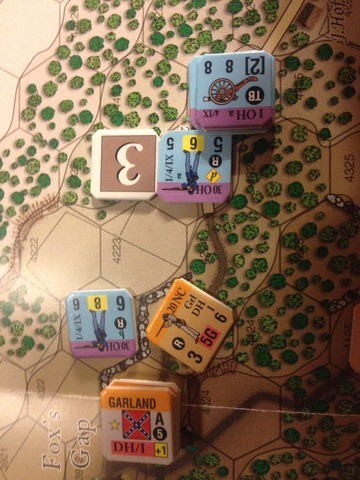
And that pretty much ends the game. The Union don’t have the ability to dislodge the rebs at this point. Perhaps if the Union had thrown more weight at the Rebel left to begin with? At any rate, the mechanics are very smooth and easy to grasp. It will be fun to try a larger scenario with the command and control rules.
About my only quibble with the game so far is that the contour lines are a not always easy to decipher on the map. For example, Hex 4023 , which the rebs were defending above, is clearly on the same contour level as 3922. But, is 4023 higher than 4123? I’m not entirely sure but I think it’s higher, because of that line wandering through 4023 just to the left of the right hex edge. It is certainly higher than 4022 and 4122, I think, as the contour line seems to run under the stone fence. At least, I think so. Seeing as it’s a game fought over hills and contours, it rather makes a difference. I’m not sure if all the light perpendicular lines and right angles are trying to represent - fields, maybe? They don’t seem that helpful.
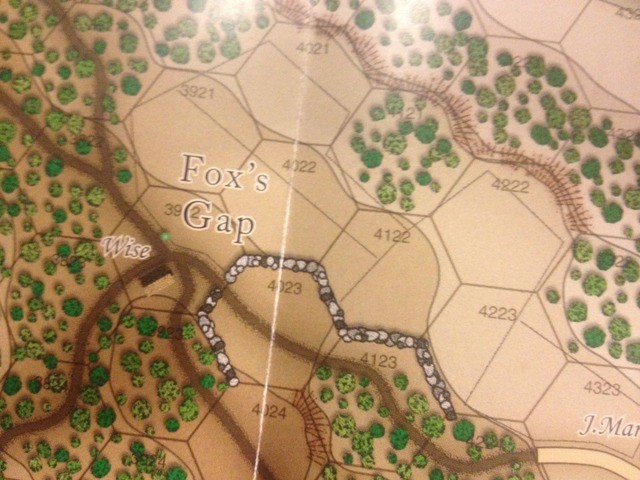
Anyway, a minor quibble. This would make an excellent miniature scenario, even for my 28mm figures. I should give that some thought.

I can see your difficulty. I believe 4023 is indeed higher than 4123. the upper contour can be seen running along the upper edge of 3833, 3922, then continues in the same direction under the stone wall of 4023 two side, then bends back along the third side of 4023. Then, converging with an even higher contour 4024 to form a steep slope or cliff face, resumes its former direction along 4124.
ReplyDeleteNow I could decipher this with moderate difficulty under the enlarged picture on screen. Whether I could at normal size, under artificial light, especially given the slight colour gradations, I very much doubt.
I have to admit, though, the production standards, apart from its practicality, are quite attractive.
A scenario of this limited size, I'm thinking, would make quite a nice little scenario for a game with miniatures - to wit, my plastic ACW armies. Do you have the orbat for this scenario?
ReplyDeleteHi Ion:
DeleteI'll email you the orbit this weekend, it's fairly simple.
Quite right, Stu. I see that now. Thanks mate.
ReplyDeleteThat is a very small scenario and would work well for Regimental Fire and Fury. Mine is not yet punched and played. I see you are "counter clipper." Me too!
ReplyDeleteGreat game photos.
I am a indeed counter clipper. It's what proper gentlemen do. Also makes them stack more easily. :)
DeleteI was thinking RF&F would work with this scenario also.
DeleteA FoW gaming pal has been trying to get me to start an ACW 15mm force... hrm.